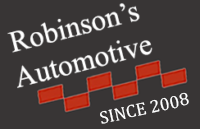1. What is the Smog Check Program?
The Smog Check Program is an important part of the State’s efforts to improve the air we breathe. Smog Check inspections are designed to identify vehicles with excess emissions so they can be properly repaired. The Program has greatly reduced air pollution created by millions of cars in California.
2. Who administers the Smog Check Program?
The California Department of Consumer Affairs’ Bureau of Automotive Repair (BAR) administers the Smog Check Program. Vehicles are inspected each year by more than 7,000 State-licensed and independently owned stations throughout the State.
3. What vehicles require a Smog Check?
Gasoline-powered vehicles, hybrid vehicles, and alternative-fuel vehicles that are model year 1976 and newer require a Smog Check, with the following exceptions:
- Six model-years and newer do not need a biennial (every other year) inspection.
- Four model-years and newer do not need a change-of-ownership inspection.
To determine the first year a vehicle is subject to a biennial or change-of-ownership Smog Check, add six or four, respectively, to the model year of a vehicle. For example, a 2010 model-year vehicle will first be subject to a biennial Smog Check in 2016 (2010 + 6 = 2016) and a change-of-ownership Smog Check in 2014 (2010 + 4 = 2014).
Diesel-powered vehicles 1998 and newer with a gross vehicle weight rating of 14,000 pounds and less require a Smog Check.
Motorcycles and electric-powered vehicles are currently exempt from the Smog Check Program.
4. Is the Smog Check Program biased against older vehicles?
No. While California law requires the Smog Check Program to focus on high-polluting vehicles, the Smog Check Program also does not require older vehicles to meet the same emissions standards as newer vehicles. Smog Check emissions standards take into consideration the age, make and model of each vehicle, so that a vehicle is never held to a standard that applied when the vehicle was originally manufactured.
5. My 1976 model-year vehicle was built in 1975. Why isn’t it exempt from Smog Check?
The Smog Check exemption is based on the model-year of the vehicle, not the date of manufacture. Accordingly, a 1976 model-year vehicle is not exempt.
6. Are government-owned vehicles subject to Smog Check?
Yes. Federal, state, county, city, and special district agencies that own or lease passenger vehicles or light-duty trucks are subject to the Smog Check Program. The Federal Clean Air Act and California Health and Safety Code mandate that all vehicles subject to the Smog Check Program receive an inspection. These requirements include vehicles classified as emergency equipment.
An Enhanced Area is an urban region designated by the U.S. Environmental Protection Agency as not being in attainment with federal health standards for ozone. Vehicles registered in an Enhanced Area are subject to a treadmill emissions test on a dynamometer and may require testing at a STAR-certified station.
8. Where does the money from the Smog Check go?
There are approximately 7,500 privately owned and operated Smog Check stations in California. The inspection and repair fees they charge are neither set nor collected by BAR. Rather, prices are market driven. An $8.25 Smog Check certificate fee is assessed on vehicles once they pass their Smog Check. This money funds BAR, including administration of the Smog Check Program and consumer protection operations relating to automotive repair.
9. Have California vehicle emissions standards changed?
Yes. BAR periodically adjusts some standards to increase their fairness. As a result, some standards become slightly more stringent than they were previously and some slightly more lenient. California’s emissions standards consider the model-year, vehicle make and model, and gross weight of the vehicle. Older cars have less stringent standards than newer ones. No older vehicle is ever held to the same standards as a newer, more technologically advanced vehicle. Allowances are made for normal wear and tear in a vehicle’s emissions control system as it ages. Standards are established through a regulatory process and are made available for public comment before they are adopted. The last adjustment occurred in 2010.
10. What is a Test-Only station?
Test-Only stations are licensed by BAR to only perform Smog Checks. These stations are not authorized to diagnose the reasons for a Smog Check failure, or perform repairs on vehicles.
11. What is a Test-and-Repair station?
Test-and-Repair stations are licensed by BAR to perform Smog Checks and repairs on vehicles.
12. What is a Repair-Only station?
Repair-Only stations are licensed by BAR to diagnose and perform emissions-related repairs on vehicles.













